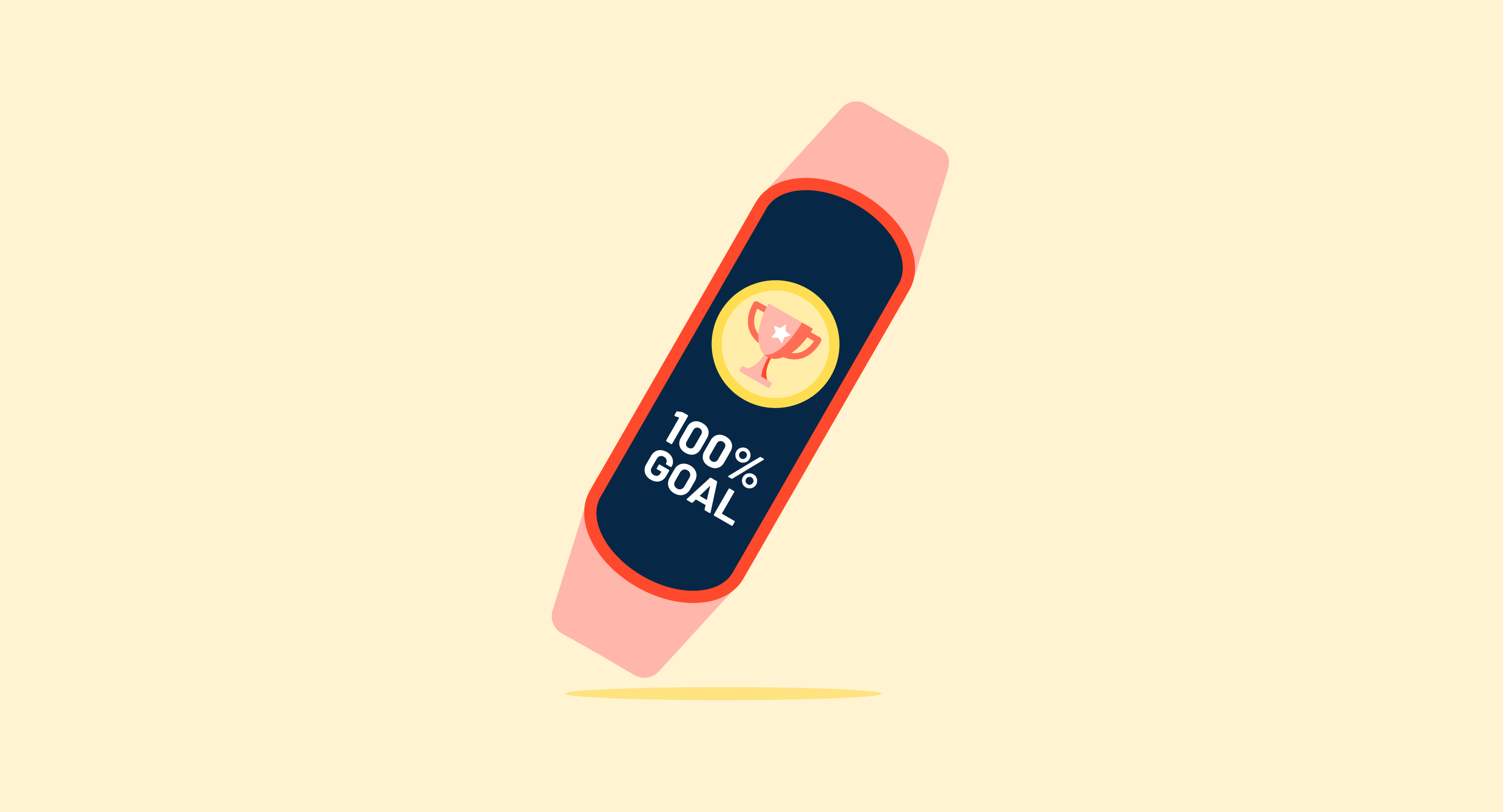Ensuring that every employee meets their performance expectations is crucial for organizational success.
However, many managers face the daunting challenge of addressing consistent underperformance among team members. The struggle to balance employee morale while pushing for improved results can feel overwhelming.
This is where a Performance Improvement Plan (PIP) becomes essential. Typically implemented after a performance appraisal, a PIP often carries a negative connotation and is mistakenly viewed as the “first step toward termination.” However, this perception is misleading.
A PIP is a structured approach that plays an important role in any talent management strategy within performance management systems. As a human resources professional, your job is to help change the conversation around performance improvement plans and empower employees who are placed on one to succeed.
What is a performance improvement plan (PIP)?
A Performance Improvement Plan (PIP) is a formal document designed to assist employees in enhancing their performance. It outlines specific goals, highlights areas needing improvement, and offers guidance. PIPs are generally implemented when an employee consistently underperforms and are often considered a last resort after other intervention methods have been attempted.
Creating a performance improvement plan can be difficult, especially when doing it for the first time. There's much to learn, from providing constructive feedback to designing a plan fostering real growth.
HR’s role in creating a PIP
Your role as a human resources professional is crucial to the performance improvement plan process. It all starts with setting clear guidelines with everyone involved.
HR acts as the administrator of a performance improvement plan. You will be responsible for creating and carrying out the process while liaising between the manager and the employee. This includes creating and maintaining all documentation from start to finish.
The most important role HR plays in implementing a PIP is acting as an unbiased third party. You are a resource for both the manager and the employee and should remain neutral during the process.
Now is the time to get SaaS-y news and entertainment with our 5-minute G2 Tea newsletter featuring inspiring leaders, hot takes, and bold predictions. Subscribe below!
Want to learn more about Performance Management Software? Explore Performance Management products.
Elements of a PIP
When creating a performance improvement plan for an employee, it’s always best to err on the side of caution and document as much as possible.
Some elements that must be included in a PIP are:
- Formalized documentation of the problematic behavior or performance issue
- A detailed description of the expectations for the employee’s performance moving forward
- A list of resources and strategies that will be made available to the employee to help improve their performance
- A specific follow-up plan that includes timelines for success, milestones and metrics to measure employee success, and a schedule for when meetings will take place with the employee to review progress
- Clearly communicated consequences if the employee fails to meet the benchmarks within the allowed timeframe
All of these documents should be reviewed, dated, and signed by the manager, the employee, and HR to ensure proper communication from everyone.
It’s important to remember that your process and documentation may evolve and change as you complete more PIPs. It’s crucial that you stay open and communicative with everyone involved as the process unfolds.
How to put an employee on a PIP
Creating the documentation and paperwork for a performance improvement plan is only half the battle—now you need to solidify the process itself. Carrying out a PIP is a lengthy process and should be treated with care at each step.
Determine whether a performance improvement plan is needed
The first step is to collect all the facts of the situation and determine whether a PIP is the correct course of action. This will include meeting with the employee and the manager who asked to put their employee on a performance improvement plan.
A performance improvement plan should only be used for an employee that the HR team and the manager believe can benefit from a PIP. It's not a way for a frustrated manager to begin the process of firing an employee.
You may deal with a manager who believes an employee requires a PIP, but you disagree. Trust your instincts, and be sure to explain whether you will or will not recommend a performance improvement plan.
Ask yourself the following questions:
- Is there an actual performance or behavioral issue that needs special attention?
- Do you feel the manager is committed to helping the employee succeed? Or is their intention to terminate the employee at the end of the PIP?
- Can the issue be fixed or solved through a formal improvement plan?
- Do you believe the employee has received proper training to do their job successfully?
- Is there a known personal issue outside of work that may affect the employee's performance?
You’ll often find that the situation can be remedied without a performance improvement plan by fully understanding it from both the manager's and the employee’s perspectives.
A PIP should be used to help an employee improve patterned behavior. It should not be used as a disciplinary tool or to punish or scare an employee for a one-off infraction.
Develop a specific plan designed to help the employee improve
Once you understand the situation and have decided to move forward with the PIP, sit down with the manager and create the plan. Specifically, outline which areas the employee should improve and develop realistic benchmarks for them to reach.
How long should a performance improvement plan last?
A performance improvement plan should last at least 30 days. Most experts recommend at least 60 days to allow employees ample time to show improvement and complete the PIP.
Focus on a few specific elements that can be easily measured so the employee can strive to improve. This will prevent the employee from becoming overwhelmed with too many goals and will make determining whether they were successful much easier.
Never use the same performance improvement plan twice. Each plan should be designed for the employee's needs and the situation. Be realistic about the manager's expectations of the employee. Remember, this plan should be designed to give them every opportunity to succeed.
Review the plan with the manager and set expectations
Now that you prepared all the documentation, bring the manager back for a final meeting to review the performance improvement plan. Evaluate each section of the PIP and be specific with the manager on their role in the process and what successful completion of the performance improvement plan looks like.
You should establish clear expectations with the manager about how the process will unfold. If this is your first time implementing a PIP, take extra care to thoroughly review the contents of the performance improvement plan with the manager before involving the employee.
Tip: First time implementing a PIP? Consider checking in with the manager throughout to see if they would do anything differently next time.
Meet with the employee and review the performance improvement plan
Once you’ve completed the above steps, you are ready to meet with the employee. The meeting should include the manager, the employee, and yourself. Use this meeting to examine their performance improvement plan, review and sign all the documentation, and answer any questions they may have.
Tip: Both the employee and manager should receive a copy of the signed performance improvement plan for their own reference and records. Doing so is also part of effective employee documentation management.
It should be clear to the employees that this process will help them succeed. It should also reassure them that you’re available to provide resources or answer any questions throughout the duration of the PIP.
Monitor the progress of the performance improvement plan
Just because the meeting is over doesn’t mean your work is finished. Don’t create a plan for the employee and then disappear. Closely monitor the employee's progress and regularly check in to ensure they receive the support they need to succeed.
You can conduct these meetings with the manager present or with the employee alone. Discuss with everyone involved which option is best for the situation and move forward from there.
Tip: Schedule a meeting to check in with the employee every two weeks for the duration of the performance improvement plan.
Conclude and evaluate the outcome of the performance improvement plan
Once the performance improvement plan has run its course, evaluate its success. First, independently review the employee's progress and compare it to the expectations set in their PIP.
After completing this, meet with the manager and review the details together. An employee doesn’t have to perfectly hit every benchmark for the PIP to be considered successful. The manager may decide that the performance improvement plan was successful even if all the expectations were unmet.
Tip: You may consider extending the PIP to employees who showed significant improvement but fell a bit short.
After you review the details with the manager and decide how to proceed, bring the employee in to discuss the results together. If they were successful, complete documentation acknowledging the successful completion of their performance improvement plan. If they did not complete the PIP as required, you may consider taking additional action as outlined in the original documentation.
Free performance improvement plan template
Ready to create your own performance improvement plan? It can be confusing to know where to start or how to format a plan of action. Thankfully, our free PIP template makes it easy, setting everyone up for success.
Benefits of a PIP
When done correctly, utilizing a performance improvement plan within your organization leads to certain benefits.
Improved company culture
For starters, using a PIP when necessary can improve company culture. Because performance improvement plans promote a sense of accountability, employees across all departments know they have to meet expectations or potentially face disciplinary actions.
This positively impacts company culture because your hard-working employees feel appreciated and that their efforts are benignly noticed. They also know everyone on their team is expected to pull the same weight. Similarly, struggling employees know that managers will support them if they fall behind on projects or tasks by providing them with a clear plan and actionable objectives on how to improve.
At the end of the day, all employees will understand what’s expected of them.
Save time and money
Organizations of all shapes and sizes know if they want to be successful they need to minimize employee turnover rates, as doing so saves money and time. Helping current employees improve in their roles and achieve top-notch performance will reduce the expenses of firing members of the team and the time needed to dedicate to candidate sourcing to fill their roles.
At the same time, a PIP also prevents the need to interview potential new employees and train them on the organization's and roles' ins and outs. Even if an employee on a PIP needs additional training, onboarding an entirely new employee will take less time and energy.
More effective than standard reviews
Performance reviews are a necessary step at most companies, but sometimes, they’re not as effective as we’d like them to be. For instance, if a performance review doesn’t necessarily go well, it rarely leads to consequences. Since not everyone reacts well to constructive criticism, employees will likely believe the feedback given to them is inaccurate. Because of this, it’s common for employees to dismiss feedback given in performance reviews and continue working and performing exactly as they were.
However, placing an employee on a PIP gives them a clear idea of where they fall short and how to strive to improve. When done right, PIPs encourage employees to work harder and achieve success.
There’s always room for improvement
It may seem daunting at first to create and implement new processes at your company, but once you get the hang of things, you’ll be one step closer to creating an environment where employees thrive.
If an employee doesn’t meet the goals of the PIP, learn how to handle employee offboarding the right way.
This article was originally published in 2021. It has been updated with new information.

Lauren Pope
Lauren Pope is a former content marketer at G2. You can find her work featured on CNBC, Yahoo! Finance, the G2 Learning Hub, and other sites. In her free time, Lauren enjoys watching true crime shows and singing karaoke. (she/her/hers)


